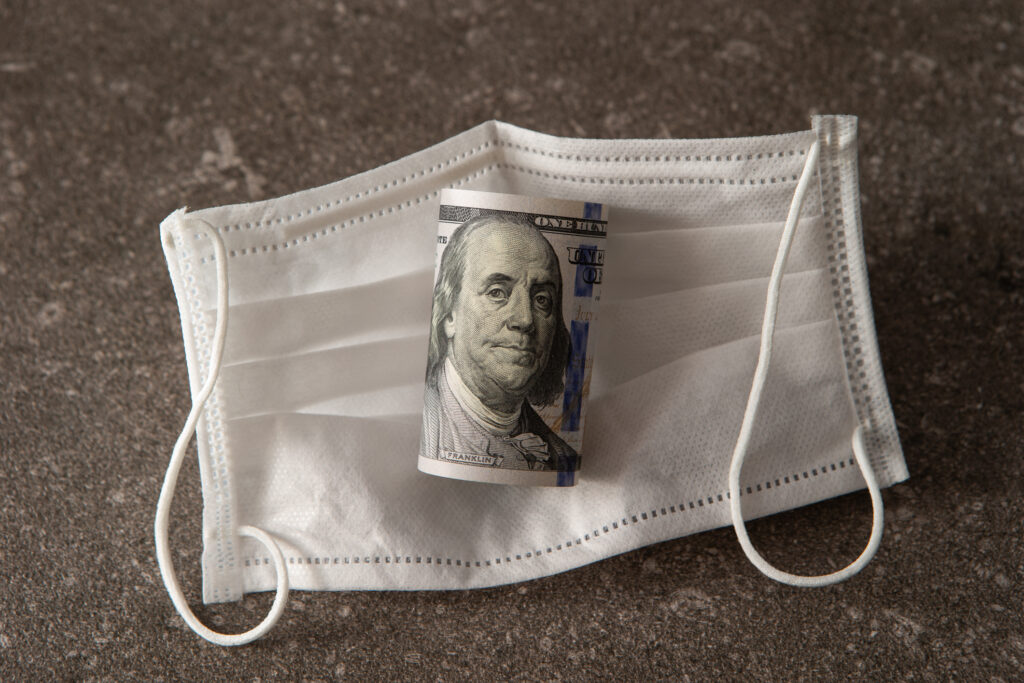Studies analyzing data from the COVID-19 pandemic show stay-in-place orders and social distancing have been costing the economy and individual health several times the value of lives saved.
The months of shutdowns have reduced gross domestic product by 5 percent, or $1.1 trillion, translating to 65,000 lives lost, note economists Scott Atlas, John Birge, Ralph Keeney, and Alexander Lipton in an article for The Hill. The authors estimate we are losing another 7,200 lives a month because of the increase in unemployment and 8,000 lives because people with health problems other than COVID aren’t getting needed medical care. The reason for the additional deaths is because mortality and income are related. The less well-off Americans are, the less healthy they tend to be. For every $10 million to $24 million in lost economic output, the overall death rate increases by one, the article states. The death rate from COVID alone was 120,542 as of June 16, 2020, according to Worldometer.
The stay-at-home orders disrupted lives, added financial and mental stress, and precluded people from seeking medical care for non-COVID health problems, the article notes. The health ramifications of the shutdown could extend beyond reopening, because 40 percent of those who have temporarily lost jobs may not regain them soon, if at all, the authors note.
COVID-19 is serious, but the government restrictions came at a high cost, says Atlas, the Robert Wesson Senior Fellow at the Hoover Institution.
“The bottom line is what’s been done is catastrophic,” Atlas told Health Care News. “The total destruction from the lockdown is far more than from COVID.”
Many deaths from COVID-19 would have been avoided if better policies had been in place, says Atlas.
“The loss of lives from the pandemic has been tragic,” said Atlas. “Sadly, much of that was an egregious failure of our governors to protect our elderly nursing home residents, while instead they confined healthy people out of fear.”
Confining the Healthy
When cases of COVID-19 began to emerge in January, cities and state governments were unsure how to respond to a virus with little history. Governments imposed stay-at-home orders to prevent patients from overwhelming hospitals, but they soon set a broader goal of containing the spread of COVID.
“We put a lot of weight on saving lives,” University of Chicago economist Casey Mulligan stated in the New York Times on April 13. “But it is not the only consideration. That’s why we don’t shut down the economy every flu season. They’re ignoring the costs of what they’re doing. They also have very little clue how many lives they are saving.”
Mulligan created a “pandemic cost tracker” in which he calculates the cumulative costs of the pandemic in the United States from mortality and all other economic variables (see accompanying figure). As of June 14, the cost per household was $14,390, six times the loss-of-life cost based on the “value of a statistical life,” or VSL, how much a lost life is worth in terms of its economic input.
Writing in The Wall Street Journal on June 15, economists David Henderson and Jonathan Lipow highlight a University of California, Berkeley study that found the lockdown measures saved 74,000 lives and $250 billion. Given that 80 percent of COVID-19 deaths are among the elderly, the VSL is $250 million, the writers note.
“The finding casts major doubt on the value of lockdowns and even social distancing as a method of reducing the spread of COVID-19,” write Henderson and Lipow.
A conservative estimate of the cost of the shutdowns is $1 trillion, four times the amount of benefit derived by lives saved, the authors state.
COVID vs. Other Threats
Much of the cost of the lockdown has been from medical and mental health conditions left untreated while physician practices were shut down, Atlas says.
“The policy itself is killing people,” Atlas told Fox News on May 23.
Analyzing claims data from March and April, the California-based health data analytics company Komodo Health found the numbers of colonoscopies and biopsies were nearly 90 percent below those for the same period last year. As a result, new colon cancer diagnoses fell by 32 percent and colorectal cancer surgeries were down by 53 percent. Chemotherapy visits were cut by one-half.
Policymakers often make decisions that pit one group of people against another, says Robert Graboyes, a scholar at the Mercatus Center at George Mason University.
“Open your town’s businesses, and five to 10 nursing home patients will die of COVID-19,” Graboyes said. “Keep the businesses closed, and five to 10 financially devastated residents will die from suicide, substance abuse, stress-induced heart attacks, and failure to seek timely medical care.”
Atlas says the lesson is simple.
“The most important point is not to implement a single-minded, myopic policy without understanding the impact that policy has,” said Atlas.
Devon Herrick, Ph.D. (devonherrick@sbcglobal.net) is a health economist and policy advisor to The Heartland Institute. AnneMarie Schieber (amschieber@heartland.org) is managing editor of Health Care News.
